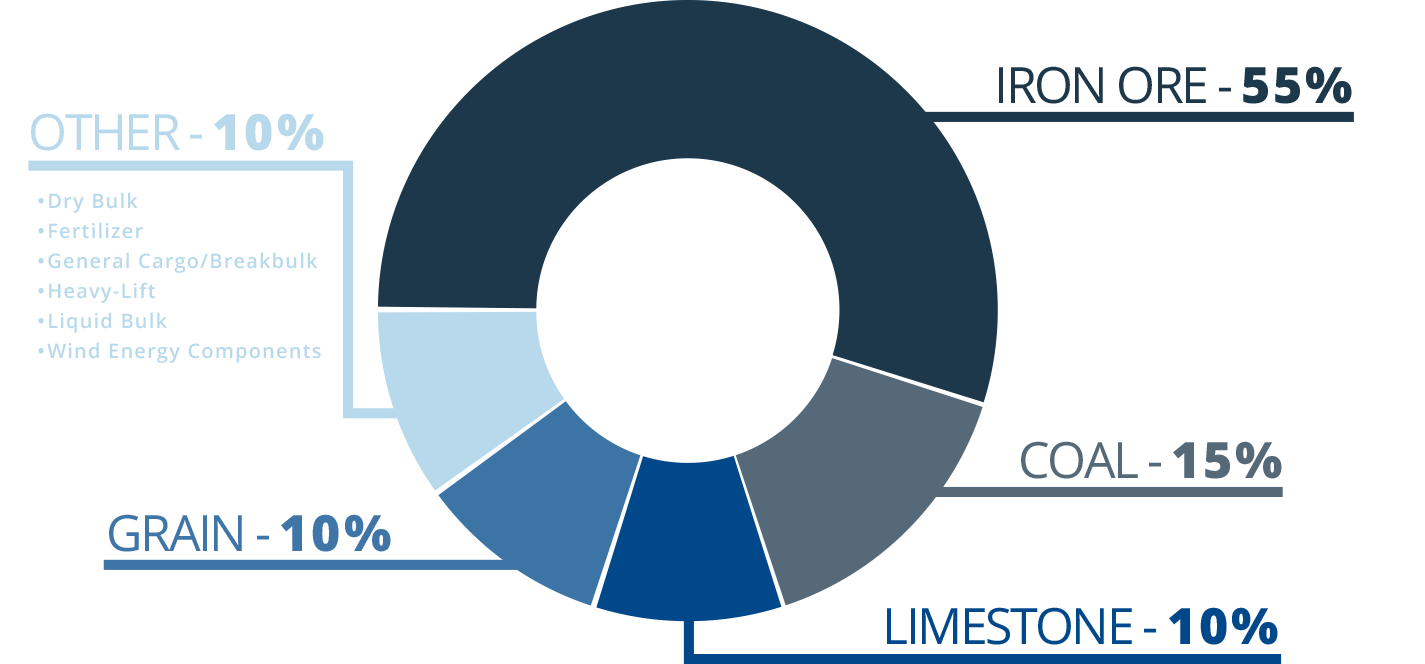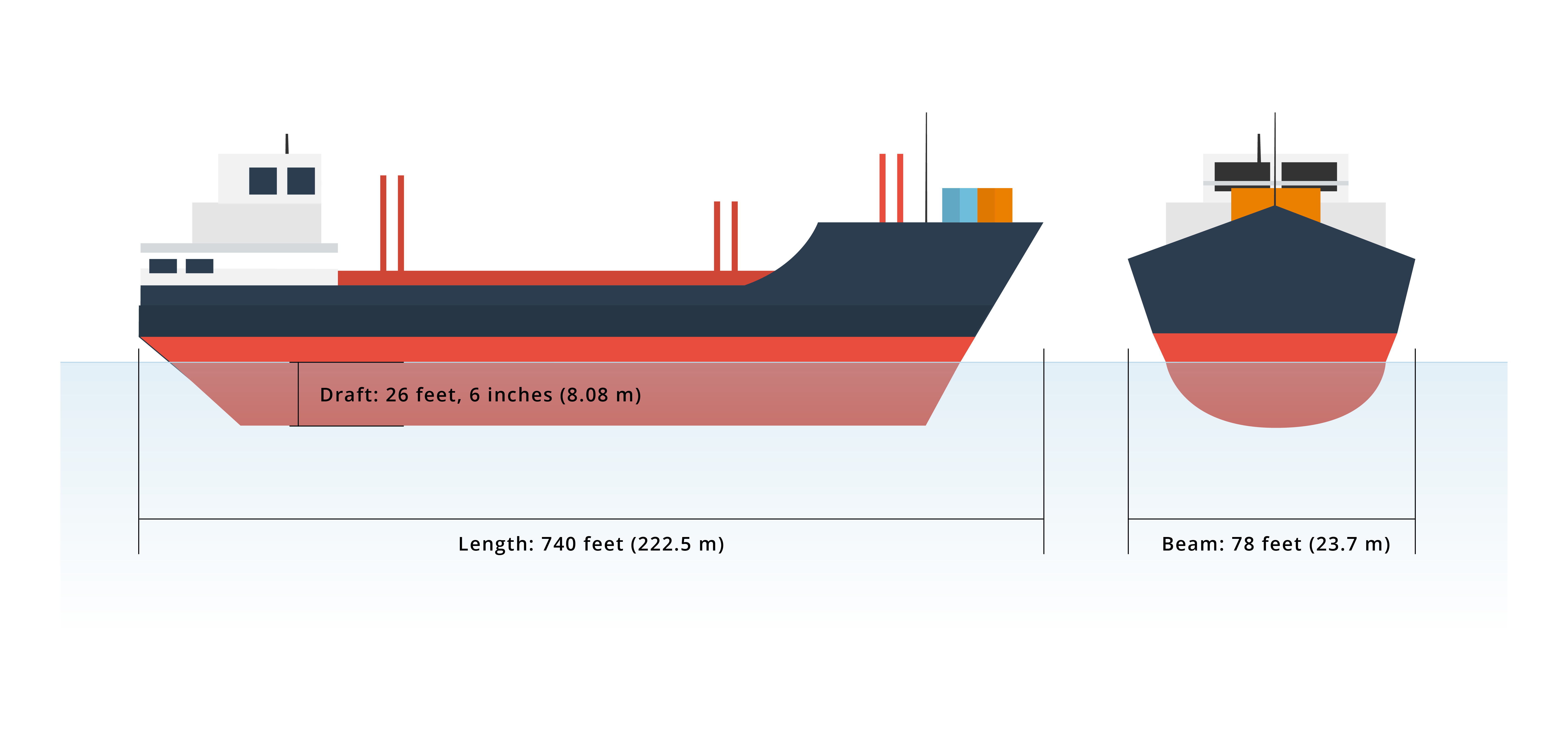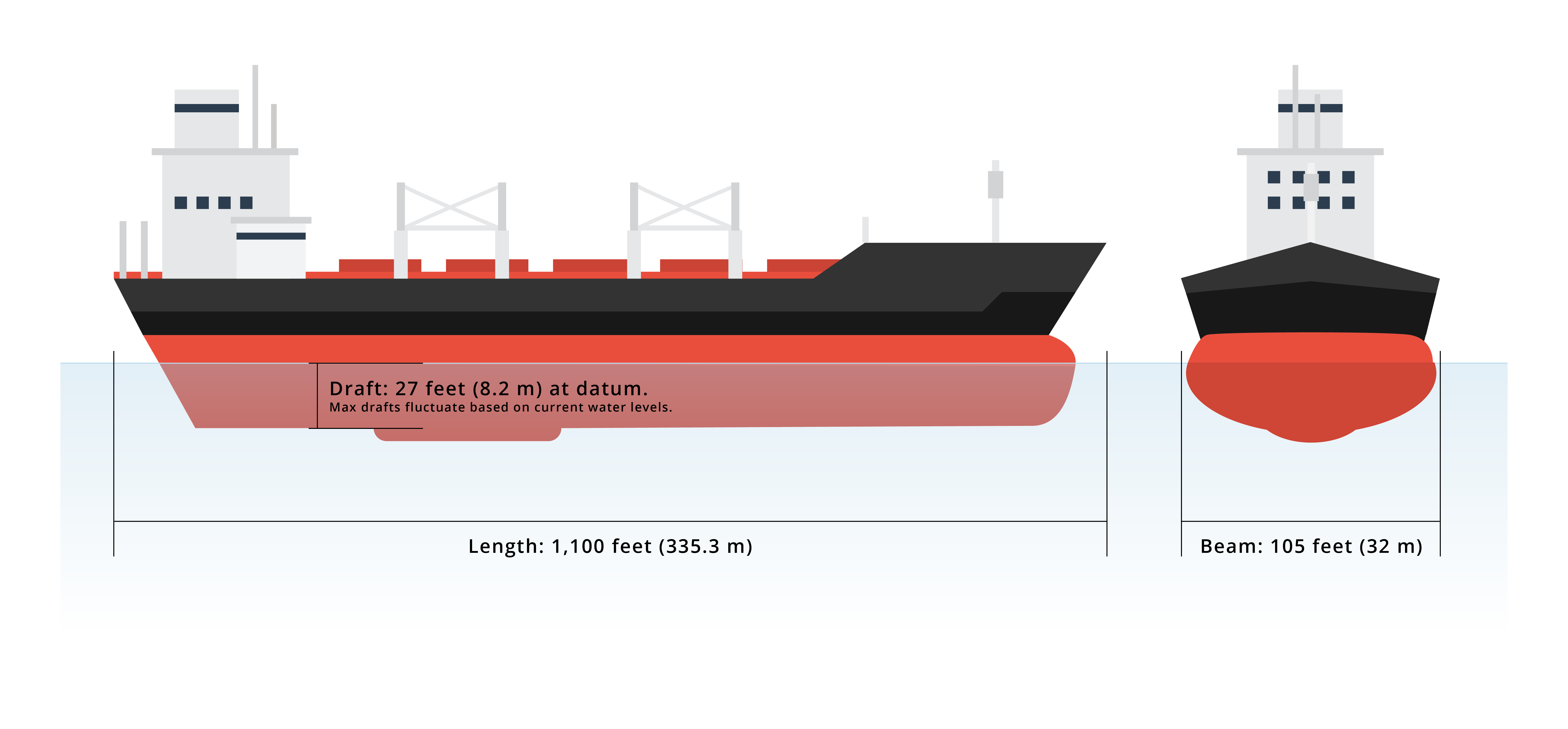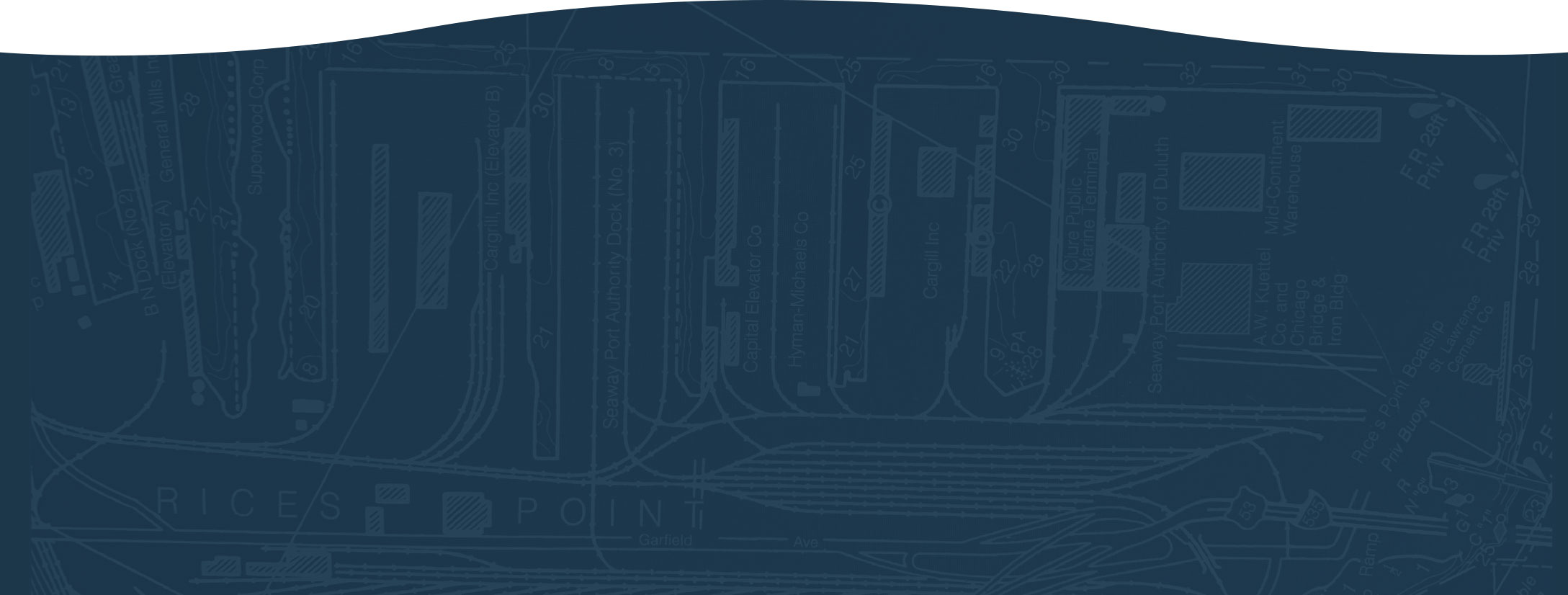Welcome to the Great Lakes cargo capital.
We move mountains of bulk material – an average of 33 million short tons each year.

We move mountains of bulk material – an average of 33 million short tons each year.

Minnesota provides 80% of the iron ore used in America's first-pour steel.
Wheat from America's heartland comprises the bulk of that float, helping feed the world. Other typical grain cargoes from our port include sugar beet pulp pellets, flax and canola.
Discover our complete list of commodities and the terminals that handle those materials in Duluth-Superior.
The Port of Duluth-Superior’s navigation season runs from March through January, and the Duluth Seaway Port Authority creates monthly maritime tonnage reports to track what’s moving. Tonnage figures are reported in short tons. View the reports below to see monthly tonnage/vessel visit statistics, plus season-end reports. The historic tonnage figures document traces harbor statistics back to 1871 for major commodities shipped through the Port of Duluth-Superior.
Westernmost tip of Lake Superior, the
and the greatest of the Great Lakes (though we might be a little biased).
less than a week’s sailing time to arrive at North America’s furthest-inland seaport.
Think of us as the Fresh Coast.
above sea level.
with 19 miles (30.6 km)
of dredged channels
of water in a naturally protected harbor
Approximately
of maritime cargo annually.
Principal cargoes:
Annual average of
Primary Outbound Cargo:
Primary Inbound Cargo:


Major facilities include:
Ore Docks
coal transshipment terminal
Bulk terminals
grain elevators (55-million-bushel capacity)
general cargo terminal/ distribution hub
fueling depot
shipyard w/2 dry docks
ORE
nationally.
COAL
nationally.
space
Great Lakes
space
nationally.
*U.S Army Corps of Engineers 2018
world's
largest
freshwater lake
(by surface area)
water surface area
31,700 sq. mi.
(82,100 km2)
Largest
of the five
Great Lakes
Deepest Point
1,332 FT.
(406 meters)
Volume
3 Quadrillion
Gallons of Water
(i.e 3,000,000,000,000,000 gallons or 11.4 quadrillion liters)
